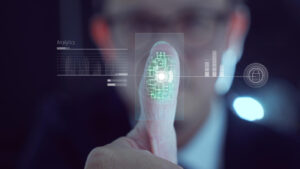We live in a phase of ever-evolving biometric technology observed Bahaa Abdul Hadi. In this age, neural biometric systems have undoubtedly evolved as a cutting-edge solution. They use artificial intelligence to improve authentication and identification processes. Here are some real-world case studies that show the implementation and outcomes of neural biometric systems.
Financial Institution
A popular financial institution adopted a neural biometric system. The company did it for customer authentication. This financial institution did it as it understood that traditional techniques were vulnerable to hacking attempts.
After trying PINs and passwords that contributed to an increase in fraudulent activities, this company moved towards biometric authentication. Here, the company used voice authentication and facial recognition to improve security. Here are the results experienced by the company:
- Considerable reduction in unauthorized access attempts
- Greater satisfaction reported by customers
- Robust protection against identity theft
- Customers turned loyal to the secure and seamless authentication process followed by the financial institution
- Improved overall user experience
- Took customers out of the cumbersome process of password management.
Healthcare Organization
In the same way, a leading healthcare organization implemented a neural biometric system. The hospital did it to improve patient identification. Also, the hospital expected to streamline medical records.
With a huge database of patient information, the hospital found that there were errors and delays in traditional methods. So, the hospital began integrating a system that uses retina scans and fingerprint recognition. Here are the results that the hospital experienced:
- Swift and accurate identification
- Better focus on patient care
- Streamlined identification processes
- Reduced workload to the administrative department
- Reduced errors in patient identification
- Reduction in medical errors
- Improved patient safety
Law Enforcement Agency
Similar to a financial institution and hospital, a law enforcement agency also started using a neural biometric system. The purpose is to ease the crime investigation process.
A high-profile case that involved the utilization of facial recognition helped the organization spot a suspect. The system identified the suspect by scanning through a huge database of facial images. It matched the face of the suspect with surveillance footage. So, here are the outcomes that the law enforcement agency achieved:
- Quickened apprehension of the criminal
- The agency understood the effectiveness of neural biometric systems
- It found that when these systems work with the best law enforcement efforts, a better outcome is possible.
Final Words
From these case studies, you might have understood the tangible benefits of neural biometric systems. These are a few examples as these systems can be beneficial for organizations functioning in other sectors as well. When responsibly deployed, it will bring fruitful results for sure. The article has been written by Bahaa Abdul Hadi and has been published by the editorial board of Identity Herald. For more information, please visit www.identityherald.com.



